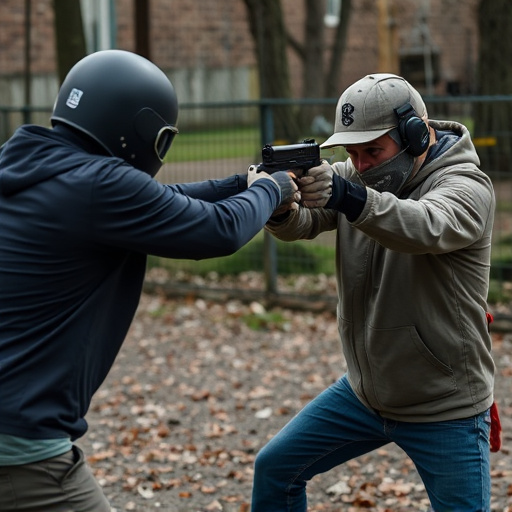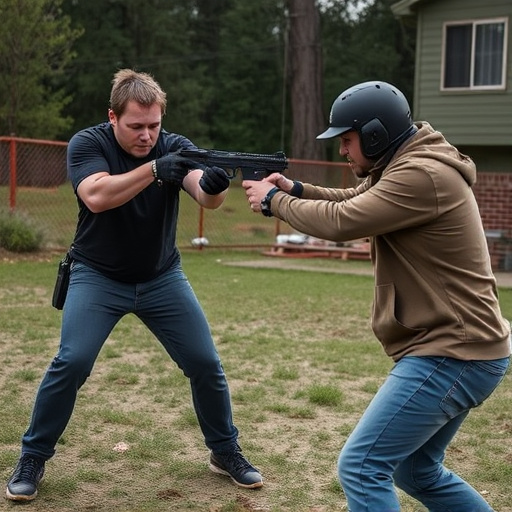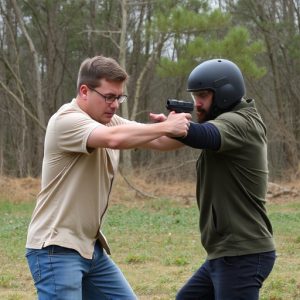Stun Guns for Beginners: Safety Features & Effective Use Guide
For newcomers to non-lethal self-defense, stun guns with built-in safety features are highly recomme…….
For newcomers to non-lethal self-defense, stun guns with built-in safety features are highly recommended. These devices prevent accidental discharges through trigger locks and adjustable intensity levels, offering users control in anxiety-inducing situations. Key safety mechanisms include safety switches, automatic shut-off, and digital controls for personalized intensity settings. Proper training is essential to effectively and responsibly use these tools, involving understanding local laws, learning de-escalation techniques, and practicing in safe environments under professional guidance.
In today’s world, self-protection is a vital consideration. For those seeking non-lethal options, stun guns offer a popular choice. This article delves into the essentials of non-lethal self-protection devices, focusing on stun guns with safety features designed for beginners. We explore key features to look for, dissect the safety mechanisms of stun guns, and provide best practices for effective, responsible use.
- Understanding Non-Lethal Self-Protection Devices
- Key Features to Consider for Beginners
- Stun Guns: A Closer Look at Safety Mechanisms
- Best Practices and Training for Effective Use
Understanding Non-Lethal Self-Protection Devices

Non-lethal self-protection devices, such as stun guns, offer a safe and effective way to deter and defend against potential threats. Unlike traditional firearms, these tools are designed to incapacitate an assailant temporarily, without causing permanent harm or death. Stun guns work by delivering an electric shock, which disrupts the muscle control of the target, making it difficult for them to move or fight back. This technology is especially valuable for individuals who want to protect themselves in various situations, from personal assaults to home invasions.
For beginners considering stun guns as a self-defense mechanism, it’s crucial to understand the device’s safety features and proper usage. Modern stun guns often come with safety switches and trigger mechanisms that require a firm press or simultaneous activation of multiple buttons. These safeguards prevent accidental activations and ensure users only deploy the device when necessary. Additionally, understanding the range, power output, and charging requirements is essential for effective and responsible use.
Key Features to Consider for Beginners

For beginners looking into non-lethal self-protection devices, understanding key features is essential. One of the most important aspects to consider is safety. Stun guns with built-in safety features, like a trigger lock or stun intensity controls, can help prevent accidental discharge and ensure users employ the correct level of force. These safety mechanisms are particularly crucial for individuals who may experience heightened anxiety or panic during an encounter, as they provide a measure of control over the device’s operation.
Additionally, beginners should look for devices that offer clear, concise instructions and user-friendly design. Easy-to-understand controls and straightforward manual guidance can significantly reduce the learning curve, enhancing confidence in handling the stun gun effectively. Devices with visible LED indicators or audio beeps can further assist users in understanding device status and operation, making them ideal choices for those new to self-protection tools.
Stun Guns: A Closer Look at Safety Mechanisms

Stun guns, designed as non-lethal self-defense tools, often come equipped with various safety mechanisms to ensure responsible use. These features are particularly crucial for beginners looking to familiarize themselves with such devices. Many stun guns incorporate safety switches that require a firm press or a specific motion to activate the device, preventing accidental discharges. Some models even feature automatic shut-off mechanisms after a certain duration of continuous use, adding an extra layer of control and safety.
Additionally, stun guns with safety features often include digital controls, allowing users to set the intensity level according to their needs and comfort. This customizable approach ensures that individuals can deploy the appropriate amount of force without causing unnecessary harm or injury. These safety mechanisms are designed not only to protect users from accidental harm but also to foster a sense of confidence in handling these powerful tools responsibly.
Best Practices and Training for Effective Use

When it comes to non-lethal self-protection devices, such as stun guns with safety features, proper training is paramount for effective and responsible use. For beginners, it’s crucial to start with a comprehensive understanding of local laws regarding stun gun ownership and usage. Many models offer safety mechanisms like auto shut-off switches and safety locks, which users should familiarize themselves with to ensure accidental discharge is avoided.
Training should encompass not just how to activate the device but also de-escalation techniques, understanding range limitations, and proper body targeting. Practicing in safe environments under professional guidance can help beginners build confidence while minimizing risks. Regular refreshers and advanced training are recommended to stay adept and adapt to evolving circumstances, making stun guns with safety features reliable tools for personal security.
For those seeking effective yet non-lethal self-protection, stun guns equipped with robust safety mechanisms offer a promising solution. These devices, designed with beginner users in mind, prioritize user safety while providing a powerful deterrent. By understanding key features and best practices outlined in this article, individuals can make informed decisions when choosing stun guns with safety features tailored to their needs. Remember, proper training is essential for responsible use, ensuring these tools remain effective and safe in the hands of those who possess them.


